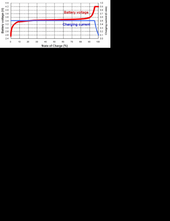BobandSharon
New Member
Hi all. As we prepare to build our off grid retirement cabin, I’ve spent a lot of time researching all the latest components. We lived in Montana, off grid from 1992 to 2006. We had 2kw of panels, 40 - T105 batteries, a C60 pwm controller, a 12v 100a AC battery charger and a Chinese 12v - 8kw inverter. We ran our small 2kw generator about 100hrs each winter. The system was simple and bulletproof, we were never left in the dark, not once.
Our new system will be around 8kw of panels, Victron charge controllers, 2 - Victron 5kw inverter/chargers and 4-6 SOK or EG4 48v batteries (OR 24 - 12v 100ah AGM batteries s/p to 48v). The batteries are the question; I’ve read numerous posts here all related to lithium batteries becoming unbalanced during periods of low or no charging, such as weeks of cloudy weather. Our place is in North Idaho, and there’s a lot of cloudy winter weeks. The batteries would have to live and operate at 30-80% charge for days without problems. My initial understanding was that lithium could be discharged to near 0% over time with no issues. But what about extended periods at low partial charge?
I understand that lithium will charge faster and fuller than LA batteries, but will I end up having to run my generator more often with lithium just to maintain balance? I’d like to run the genset once the batteries reached say, 20% state of charge, and not have to worry about them becoming unbalanced in the mean time.
Are there any lithium batteries available that automatically maintain balance throughout their state of charge?
Thanks in advance!
Bob
Our new system will be around 8kw of panels, Victron charge controllers, 2 - Victron 5kw inverter/chargers and 4-6 SOK or EG4 48v batteries (OR 24 - 12v 100ah AGM batteries s/p to 48v). The batteries are the question; I’ve read numerous posts here all related to lithium batteries becoming unbalanced during periods of low or no charging, such as weeks of cloudy weather. Our place is in North Idaho, and there’s a lot of cloudy winter weeks. The batteries would have to live and operate at 30-80% charge for days without problems. My initial understanding was that lithium could be discharged to near 0% over time with no issues. But what about extended periods at low partial charge?
I understand that lithium will charge faster and fuller than LA batteries, but will I end up having to run my generator more often with lithium just to maintain balance? I’d like to run the genset once the batteries reached say, 20% state of charge, and not have to worry about them becoming unbalanced in the mean time.
Are there any lithium batteries available that automatically maintain balance throughout their state of charge?
Thanks in advance!
Bob



